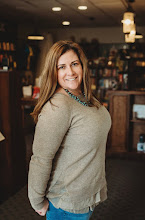Have you
been following the blog posts from Chris Lehman and Kate Roberts? They have a
new book coming out on close reading. When I first heard the topic for their
book, I was skeptical. I feel like CCSS and the focus on the tests have moved
us away from what is important in reading and put too much emphasis on test
taking skills. But then I read their posts and listened to their podcast with
Franki Sibberson. I have to say, this is something I can support.
It was in listening to the podcast that I began thinking of close reading in my own life. When I teach reading and writing I’m often looking for authentic lessons. What can I teach my students that I actually use as a reader or writer? Chris and Kate talked to Franki about the ways we read closely in our everyday lives and I smiled. I had just read “closely” that very morning.
My
husband and I are currently planning a trip to Disney World this spring. I’ve
been scouring websites reading and rereading to learn about tickets, lines,
lodging, meal plans, and more. I’ve researched from different websites,
received anecdotal evidence from friends, and had experts send me information
as well. I’ve taken notes and referred to them, forming decisions as I go. The
first time I heard the term “close reading,” I dismissed it as a test taking
strategy and not something I'd really use. In reality, however, all of the
reading I was doing for our trip was close reading.
With that
in mind, I thought about my students. I didn’t mind the work I did researching
Disney World because it was a topic I was excited about. How could I tap into
that with my students? What I decided was to incorporate some close reading
with some research. My students are currently researching endangered animals
with their Social Studies/ Science teacher. Fifth graders love animals and they
beg me every spare minute they have to go use a computer and learn more about
the animals they picked. Wondering how I could harness this excitement, I asked
their teacher what their end product would be. In her class they need to create
a poster with drawings and facts. I returned to my class. How would they feel
about writing up a research paper, a brochure, or a slide to go with their poster on
their endangered animal? They cheered. My husband thought I was joking when I
relayed that to him, kids cheering at the idea of writing more? Doing more
research? Yep, they sure did.
Tomorrow we will begin talking about how we read our articles and websites to gather information we need. We will discuss sources, note taking, and more. We will practice reading an article once, and then rereading to glean information from it. I am excited to begin and see what my students teach me along the way.















